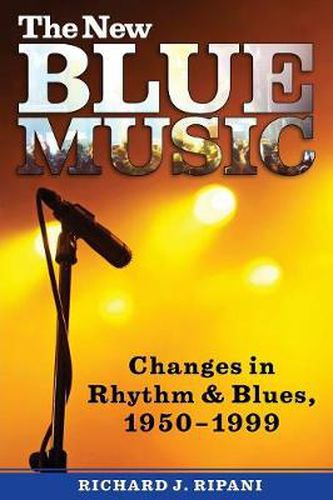Readings Newsletter
Become a Readings Member to make your shopping experience even easier.
Sign in or sign up for free!
You’re not far away from qualifying for FREE standard shipping within Australia
You’ve qualified for FREE standard shipping within Australia
The cart is loading…






This title is printed to order. This book may have been self-published. If so, we cannot guarantee the quality of the content. In the main most books will have gone through the editing process however some may not. We therefore suggest that you be aware of this before ordering this book. If in doubt check either the author or publisher’s details as we are unable to accept any returns unless they are faulty. Please contact us if you have any questions.
Rhythm & blues emerged from the African American community in the late 1940s to become the driving force in American popular music over the next half-century. Although sometimes called
doo-wop,
soul,
funk,
urban contemporary,
or
hip-hop,
R&B is actually an umbrella category that includes all of these styles and genres. It is in fact a modern-day incarnation of a musical tradition that stretches back to nineteenth-century America, and even further to African beginnings. The New Blue Music: Changes in Rhythm & Blues, 1950-1999 traces the development of R&B from 1950 to 1999 by closely analyzing the top twenty-five songs of each decade. The music of artists as wide-ranging as Louis Jordan; John Lee Hooker; Ray Charles; James Brown; Earth, Wind & Fire; Michael Jackson; Public Enemy; Mariah Carey; and Usher takes center stage as the author illustrates how R&B has not only retained its traditional core style, but has also experienced a
re-Africanization
over time. By investigating musical elements of form, style, and content in R&B–and offering numerous musical examples–the book shows the connection between R&B and other forms of American popular and religious music, such as spirituals, ragtime, blues, jazz, country, gospel, and rock ‘n’ roll. With this evidence in hand, the author hypothesizes the existence of an even larger musical
super-genre
which he labels
The New Blue Music.
$9.00 standard shipping within Australia
FREE standard shipping within Australia for orders over $100.00
Express & International shipping calculated at checkout
This title is printed to order. This book may have been self-published. If so, we cannot guarantee the quality of the content. In the main most books will have gone through the editing process however some may not. We therefore suggest that you be aware of this before ordering this book. If in doubt check either the author or publisher’s details as we are unable to accept any returns unless they are faulty. Please contact us if you have any questions.
Rhythm & blues emerged from the African American community in the late 1940s to become the driving force in American popular music over the next half-century. Although sometimes called
doo-wop,
soul,
funk,
urban contemporary,
or
hip-hop,
R&B is actually an umbrella category that includes all of these styles and genres. It is in fact a modern-day incarnation of a musical tradition that stretches back to nineteenth-century America, and even further to African beginnings. The New Blue Music: Changes in Rhythm & Blues, 1950-1999 traces the development of R&B from 1950 to 1999 by closely analyzing the top twenty-five songs of each decade. The music of artists as wide-ranging as Louis Jordan; John Lee Hooker; Ray Charles; James Brown; Earth, Wind & Fire; Michael Jackson; Public Enemy; Mariah Carey; and Usher takes center stage as the author illustrates how R&B has not only retained its traditional core style, but has also experienced a
re-Africanization
over time. By investigating musical elements of form, style, and content in R&B–and offering numerous musical examples–the book shows the connection between R&B and other forms of American popular and religious music, such as spirituals, ragtime, blues, jazz, country, gospel, and rock ‘n’ roll. With this evidence in hand, the author hypothesizes the existence of an even larger musical
super-genre
which he labels
The New Blue Music.